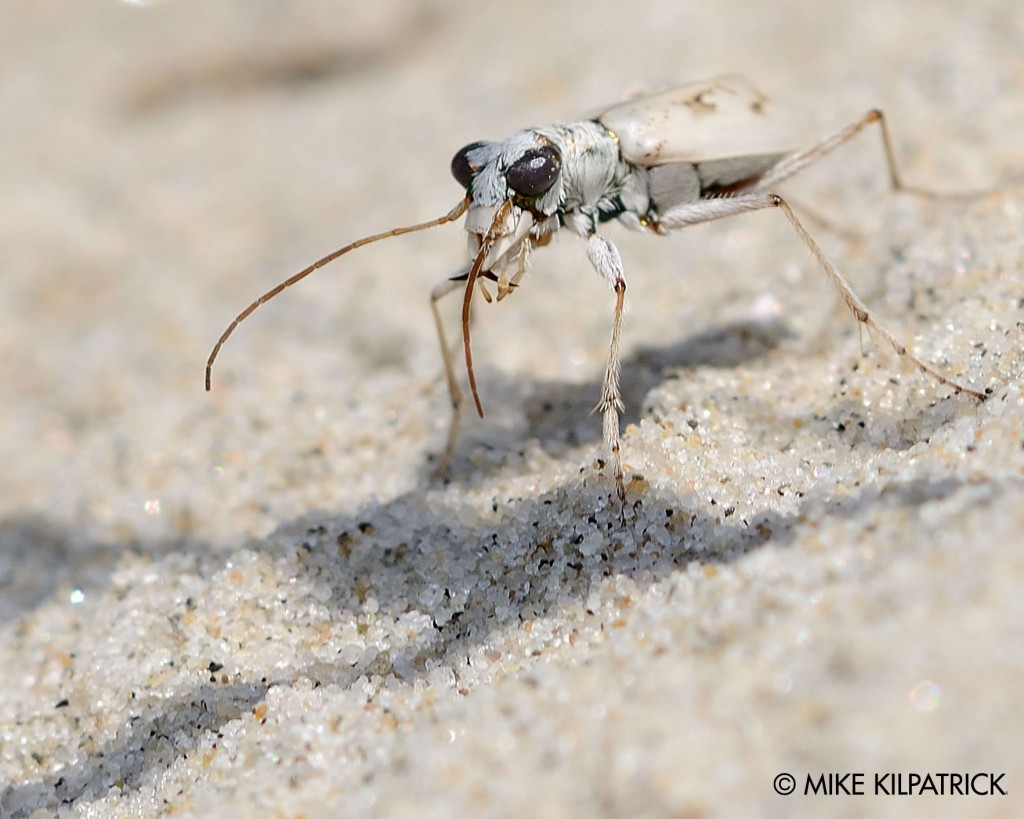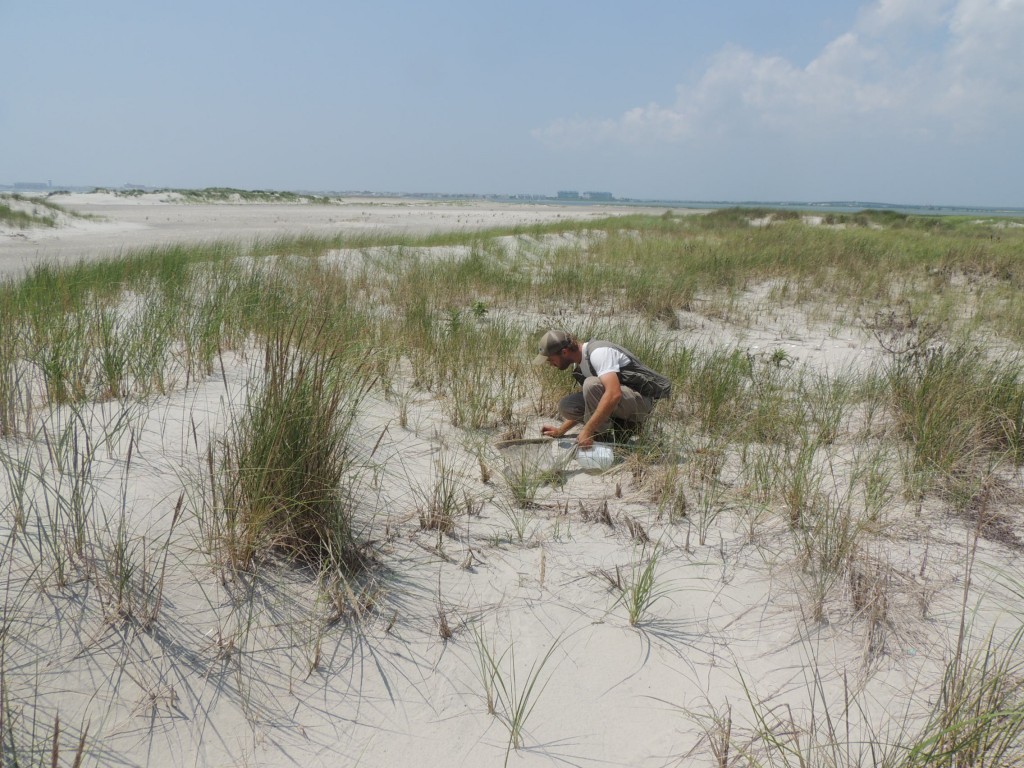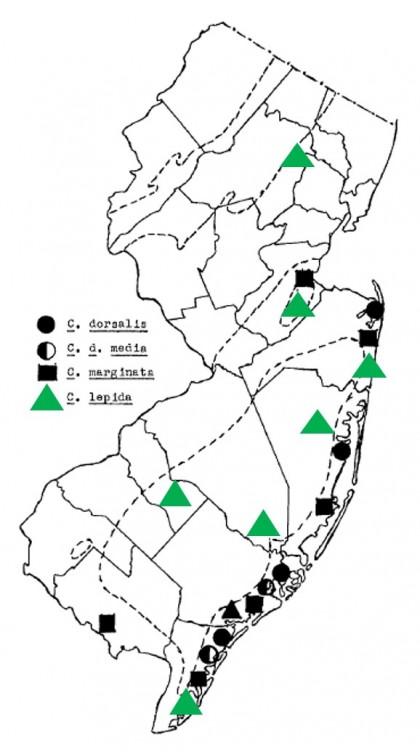
This is the dune ghost (Ellipsoptera lepida), a beautiful cream-colored tiger beetle that I have been getting to know at a few sites in New Jersey. This is a creature of wide open spaces and dry shifting sands.
It is known from only a handful of sites in New Jersey and is declining across its range. As I’ll describe below, I recently added another site to the handful.
The ghost occurs at both coastal dunes and at sandy inland sites. Tiger beetles like the dune ghost are creatures of open terrain, where they actively hunt for prey and find mates.
Open patches of ground are created by either natural or man-made disturbance.
Coastal environments are by nature very dynamic. Sandy shores and dunes are in constant motion, maintaining the open, unvegetated terrrain that tiger beetles require.

Inland sites on the other hand, pretty much depend on man-made disturbance.
It’s likely that big fires were the main natural disturbance factor before human settlement in South Jersey and the Pine Barrens, but in more modern times land clearing, timber cutting, sand mining and roads create and maintain tiger beetle habitat.
As many of these practices wane, tiger beetles are losing habitat to vegetation encroachment.
The photos below show an example of vegetation encroachment. This open sand pit is a man-made feature. Over the decades since activity stopped here, the forest has grown back.
Now the dune ghost and several other tiger beetle species are making their last stand at a tiny hump of vegetation-free sand. I was part of an effort to peel back some of the young growth in this area as you can see in the before/after slider below.


